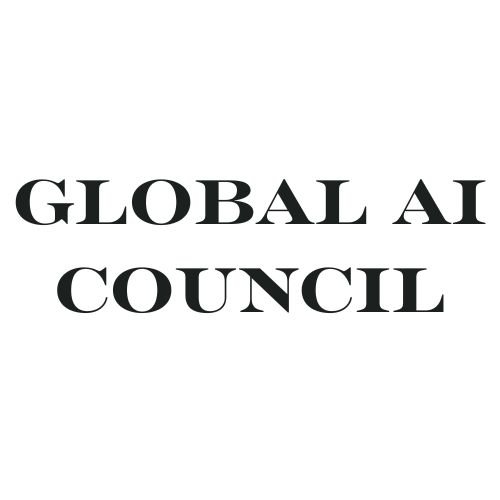The Rising Tide of AI: Progress, Promise & Purpose
By Kate Hancock, Global AI Council
We’re living through one of the most dynamic shifts in human technological history — the era of artificial intelligence is no longer coming, it’s here. For the Global AI Council community, the question is not if, but how we steer this tide so it lifts all boats.
What’s improving — and fast
Here are some of the major moves in AI right now that deserve our attention.
1. Broad adoption across business & industry
Across the globe, companies are increasingly embedding AI into their core operations. According to the Stanford Institute for Human‑Centered AI’s 2025 AI Index report, 78 % of organisations reported using AI in 2024 — up from 55 % a year earlier. Stanford HAI+1
That surge is meaningful: it means AI is moving from lab-ideas to living-reality.
Moreover, AI isn’t just automation — it’s enhanced reasoning, multimodal capability, and agentic models (i.e., AI systems able to not just answer questions but act). A McKinsey & Company report identifies five big innovations for business: enhanced intelligence & reasoning, agentic AI, multimodality, improved hardware and computational power, and increased transparency. McKinsey & Company
So: the tools are improving, the uptake is accelerating.
2. Geopolitical & investment momentum
Big money is flowing. The Stanford AI Index notes massive investment in private AI deployment. Stanford HAI+1
Simultaneously, regions and governments are waking up to their role. For instance, in Europe, new “AI-gigafactory” infrastructure is being discussed. Wikipedia
These are not small moves. They signal that AI is now being framed as both the next frontier in industrial strategy and global competitiveness.
3. Workforce and skill shifts
The workforce of tomorrow is already emerging today. The PricewaterhouseCoopers (PwC) Global AI Jobs Barometer tells us that skills tied to AI-exposed jobs are changing 66 % faster than skills in other jobs. PwC
Upskilling, reskilling, and making AI literacy more universal are not optional — they’re foundational to making this transformation inclusive rather than exclusive.
4. Impact beyond productivity: human-centred gains
Yes, productivity gains matter. But what excites me even more are the human-centred possibilities. AI is being used to personalise education, amplify healthcare access, support underserved communities. The United Nations Development Programme’s Human Development Report 2025 emphasises that people, not machines, should be at the centre of these changes. Human Development Reports
In short: this isn’t just about faster business; it’s about better lives.
What still needs work (and where the Council can help)
Progress is real. But our job as a Council, as thought-leaders and practitioners, is to also shine light on the gaps — because that’s where purpose lives.
a. Value extraction lags usage
It’s one thing to have AI, another to extract meaningful value from it. Some studies suggest only a small fraction of companies are seeing returns at scale. (See the earlier Business Insider / BCG coverage.) Business Insider
We need frameworks and governance models so that adoption isn’t superficial.
b. Ethics, fairness, access
With power comes responsibility. Pervasive AI demands we clearly address bias, transparency, model explainability, access equity. The UNDP report warns: tech isn’t a silver bullet when social or systemic barriers remain. Human Development Reports
As a Council, we must emphasise that AI for good requires intention, not accident.
c. Infrastructure, environment & sustainability
AI’s compute hunger is real. Data centre energy use, supply chain for hardware, lifecycle impacts — these matter. A recent research agenda calls for environmentally sustainable AI systems. arXiv
If we build the future at too great an environmental cost, we risk winning a race but losing the planet.
What the Global AI Council will focus on
Here’s how I propose we lean in over the coming year:
Championing AI literacy & equitable access
We’ll support initiatives that bring AI education to underserved regions — because the opportunity cost of exclusion is too high.Promoting Best-Practice Frameworks for Value Creation
We’ll collate and share real-world case-studies: when AI adoption works, what did the workflow re-design look like, how were metrics tracked, how was the workforce engaged.Advancing ethical & sustainable AI governance
We’ll convene roundtables with ethicists, technologists, business leaders and community voices — aligning on principles, but also actionable steps.Fostering global collaboration & voice for the Global South
Too often the narrative is dominated by the largest economies. Our Council will emphasise inclusive global representation so that solutions are built with everyone, not just for them.
Final thoughts
We stand at a threshold. The “improvement” in AI isn’t just measurable in benchmarks, investment dollars or model sizes — it’s measurable in lives changed, systems re-imagined, equity advanced.
Having made many mistakes myself across my own projects, I believe deeply in one thing: responsible execution beats flashy projection.
Let’s not wait for the future to come. Let’s build it — intelligently, intentionally, inclusively.
